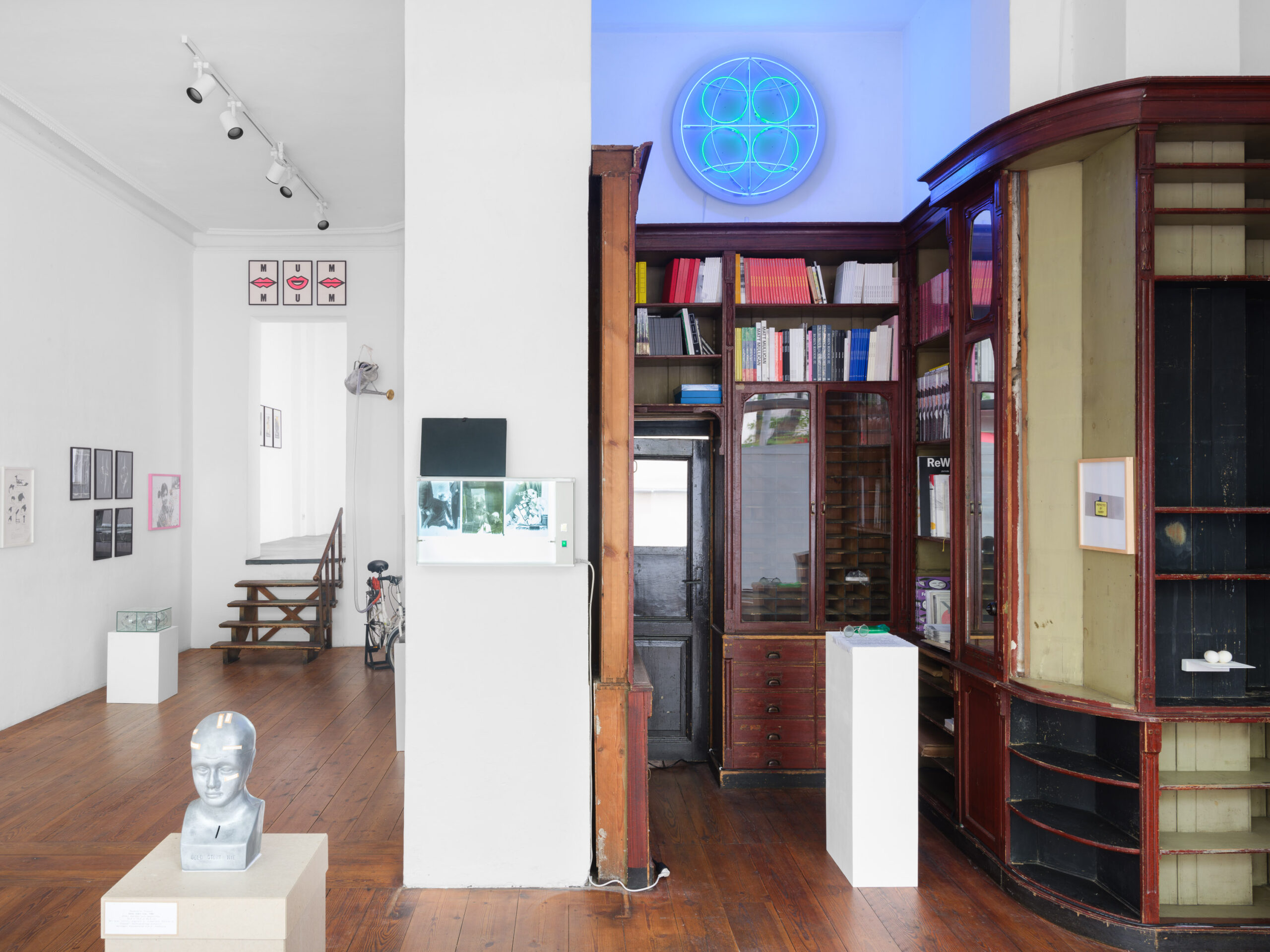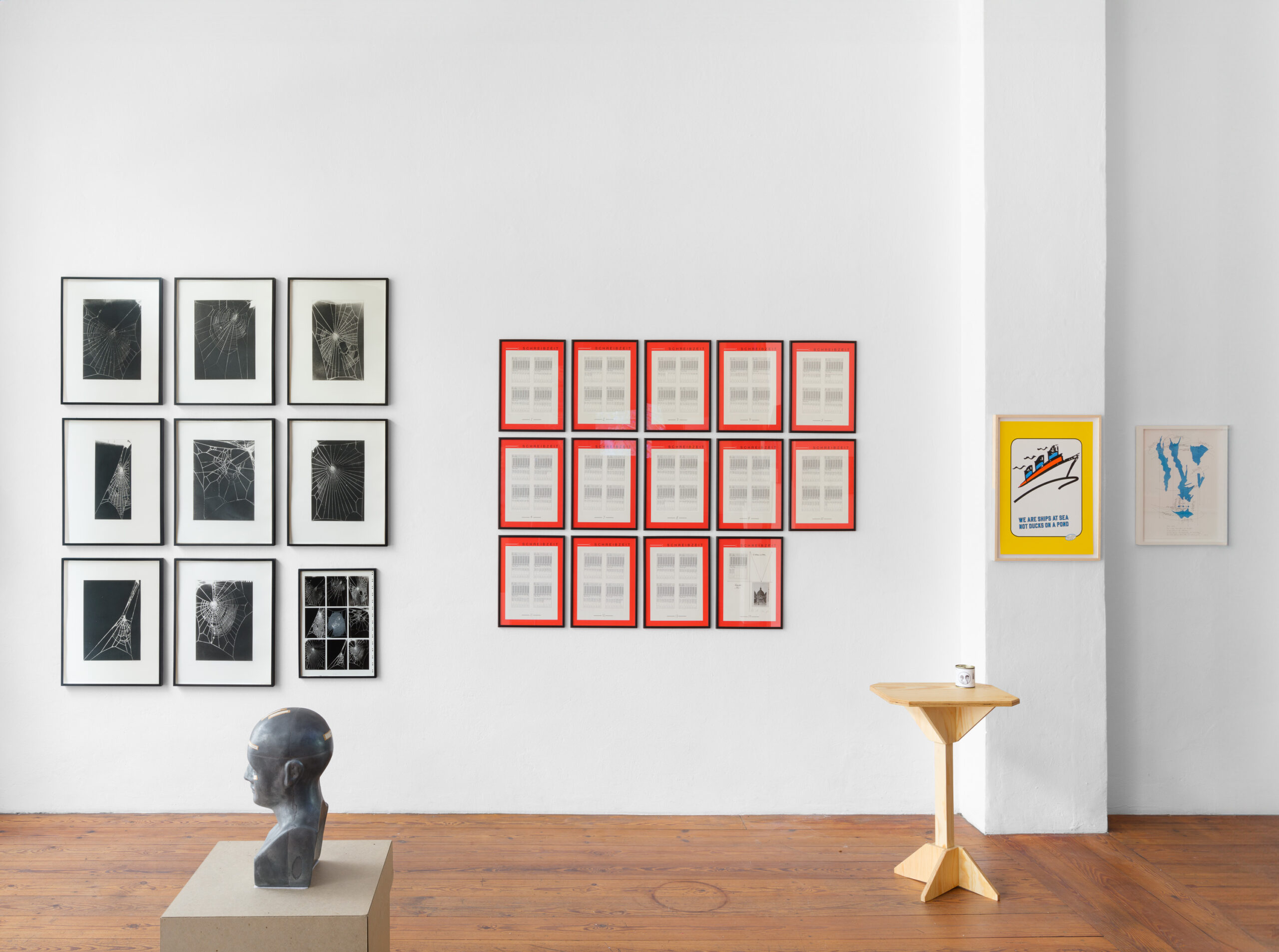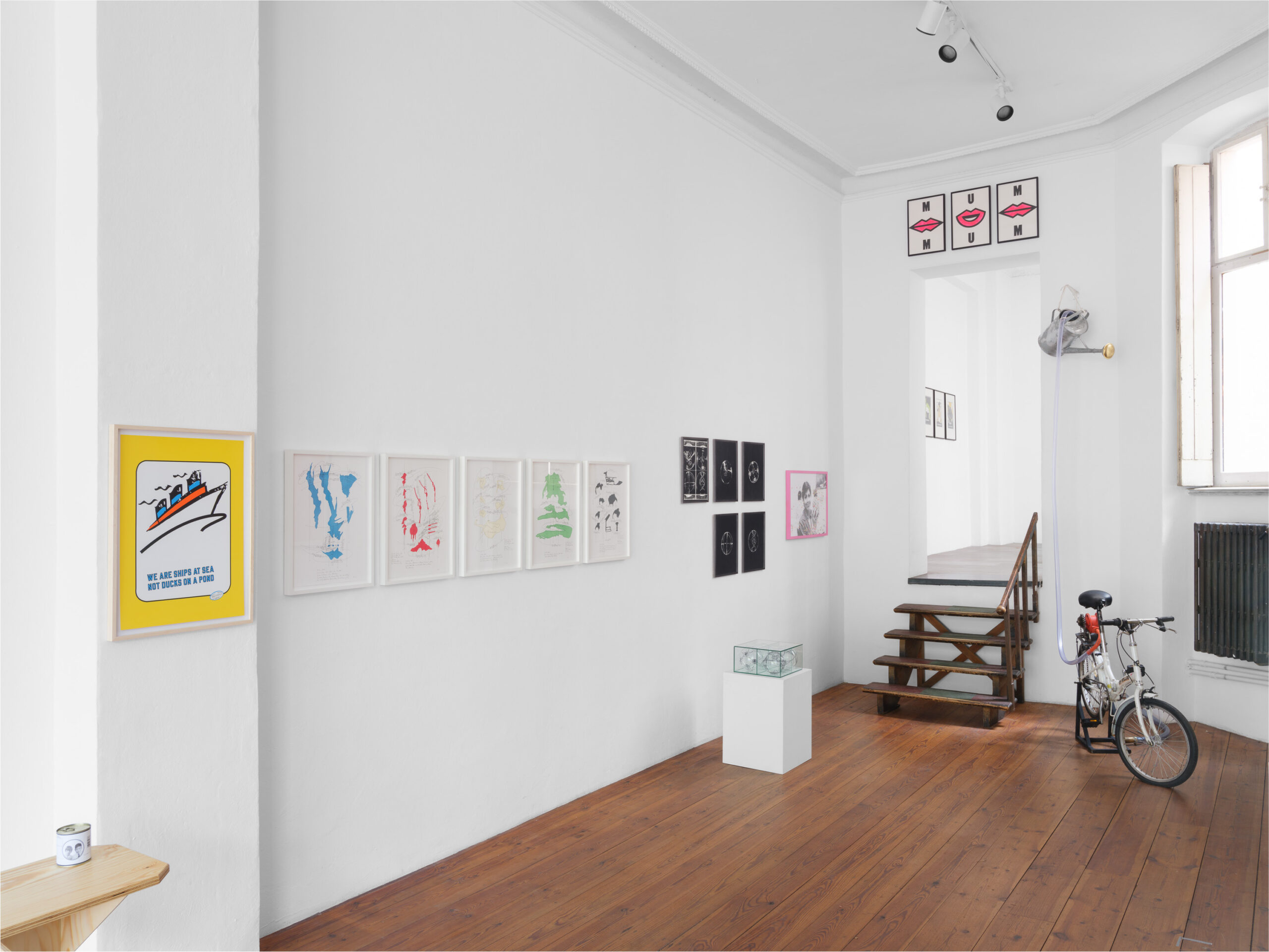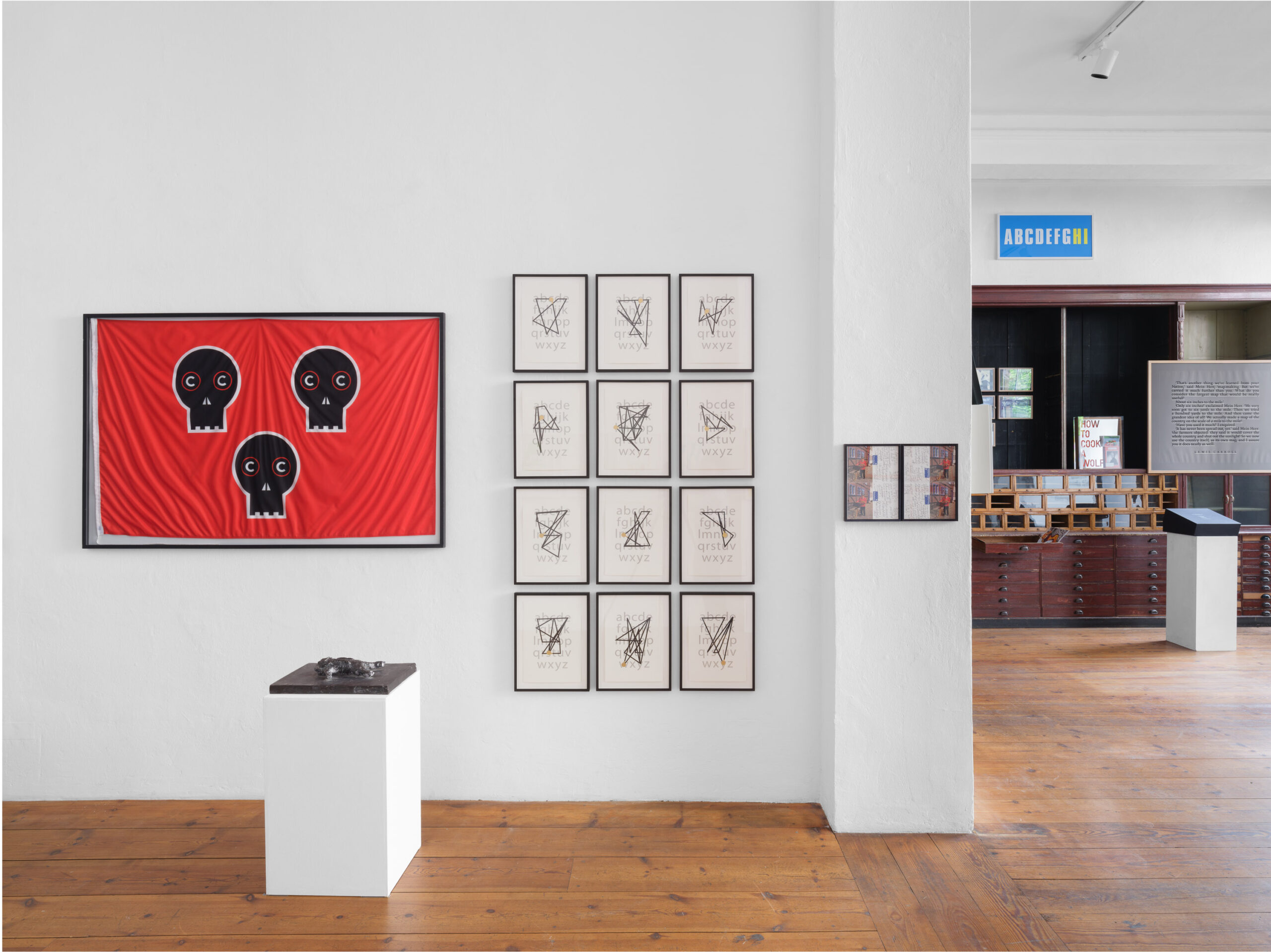



More Than Once – 35 Years of Klosterfelde
With Donald Baechler, John Bock, Klaus vom Bruch, Werner Büttner, Hanne Darboven, General Idea, Christian Jankowski,
Joseph Kosuth, Matt Mullican, Henrik Olesen, Dan Peterman, Kay Rosen, Nicolaus Schafhausen, Rirkrit Tiravanija,
Rosemarie Trockel, Jorinde Voigt and Lawrence Weiner
April 27 to July 20, 2024
The title of the exhibition, which celebrates the 35th anniversary of Klosterfelde Edition, sums up the central characteristic of the edition as an art form. The fact that they are available ‘more than once’ radically distinguishes editions and multiples from the idea that an artistic work must be exclusive. It is a democratic idea that manifests itself here: Editions mean participation. They undermine the elitism of the art world by making it accessible and visible.
Keeping the idea of editions alive is the central concern of the gallery. Since it was founded by Helga Maria Klosterfelde in 1989, 140 editions have been produced in an intensive dialogue with around 40 artists. The artworks will be collected in a book to be published at the end of this year. More Than Once also marks the beginning of a new chapter for Klosterfelde Edition. Klosterfelde returns to Hamburg, where it all began 35 years ago. It is the last exhibition to be shown on Potsdamer Strasse in Berlin.
For her early work from 1991, Rosemarie Trockel had a bust cast in pewter and covered it with inscribed strips of paper. Trockel refers to Franz Joseph Gall’s skull theory from the early 19th century. The physician and anatomist claimed to be able to read a person’s character from the shape of their head. The National Socialists later used Gall’s phrenological models as evidence for their racial theory, but brain research has long since disproved it. Trockel’s version ironically takes this to the extreme. The work is also a prototype of the artist’s sense of humour: on closer look the bust turns out to be a money box that invites people to collect. Above the breastbone there is a slot for coins and instead of a name, the title of the work is written on the plinth: Geld stört nie (Money never bothers you).
The question of what an edition can be and how it differs from a series of uniques has been asked again and again over the years. In 1997, Matt Mullican collaborated with Klosterfelde Edition to produce eight glass boxes with four glass spheres on which he drew pictograms by hand. Just before the opening, Mullican added another edition: Five photograms depict the spheres in the boxes and at the same time alienate them. The direct exposure process creates a ghostly three-dimensionality that makes them look like planets.
Editions offer artists the opportunity to revisit their own works. In 2011, Jorinde Voigt took up a series of earlier collages in her edition Gardens of Pleasure. For these, she had reduced erotic images from the 17th century to their silhouettes and reassembled them. Using a lithographic printing process, the artist produced twelve prints in each case, which she then completed by hand. In this way, Voigt multiplied and democratised her works without them losing their uniqueness.
To this day, the print is the most common art edition; no other is better suited to the dissemination of ideas. Kay Rosen also uses them for her trenchant language and text games, which she realises with the help of visual and typographic strategies. Rosen has a long-standing relationship with the gallery. The exhibited work Uh Oh Period from 2017 comments on the election of Donald Trump as President of the United States – using reduced means such as precisely placed letters and punctuation marks in suggestive colours.
To mark the exhibition, Rirkrit Tiravanija, who is also closely involved in the history of the gallery, has developed a new edition. The inspiration for the work is a table from the estate of a captain from Hamburg. Tiravanija had the found object reconstructed from maritime pine, making it water-resistant. On the table is a can of Labskaus, a Northern European specialty, with a label designed by the artist. The table as a place of encounter is a recurring element in Tiravanija’s work, as are travelling and the appropriate food. – Farewell and have a good trip!
Images: Copyright The Artists, Courtesy Klosterfelde Edition, Photos by Marjorie Brunet Plaza
